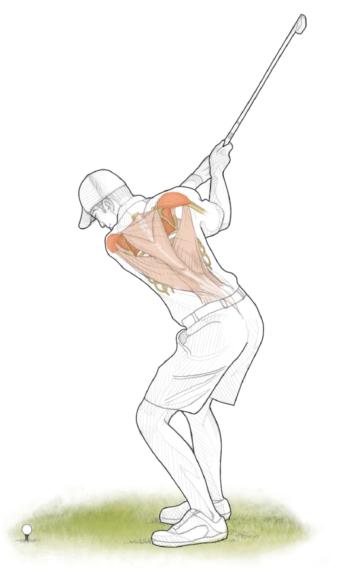Dynamic rotational resistance: step back internal shoulder rotation
This is an excerpt from Golf Anatomy 2nd Edition by Craig Davies,Vince DiSaia.

Execution
- Attach a band to an immovable object in front of you, somewhere between the floor and waist height. Stand upright with good posture, holding the tense band in your right hand out in front of you.
- Set your shoulder blade so that it is depressed and retracted. Rotate your shoulder externally with your right arm out to the right side, so that the shoulder and elbow are at 90 degrees. Your elbow should be positioned around the height of your shoulder, and the forearm should be perpendicular to the ground (the forearm may be leaning forward or backward of perpendicular, depending on the range of your shoulder external rotation).
- Once the shoulder is set in the proper position, step back without changing arm position to increase the tension in the band.
- Hold this position for 8 seconds, then slowly allow the shoulder to internally rotate until the forearm is parallel to the ground.
- Return to the start position and perform 8 repetitions. Repeat with the left shoulder.
Muscles Involved
- Primary: Infraspinatus, teres minor, rhomboids, deltoids, serratus anterior
- Secondary: Latissimus dorsi, middle and lower trapezius
Golf Focus

Shoulder mobility is obviously very important to a good golf swing, but so is your ability to properly rotate the shoulder throughout the swing. As you move into the backswing, the muscles controlling the scapula must be able to stabilize it so that the shoulder can properly and fully rotate. However as the swing continues, you must also be able to properly stabilize the shoulder complex during the transition and then eventually control movement as the shoulder moves into internal rotation. This allows you to stay on path during the downswing and allows you to properly decelerate the club during the follow-through to avoid injury.
Learn more about Golf Anatomy, Second Edition.
More Excerpts From Golf Anatomy 2nd EditionSHOP

Get the latest insights with regular newsletters, plus periodic product information and special insider offers.
JOIN NOW


